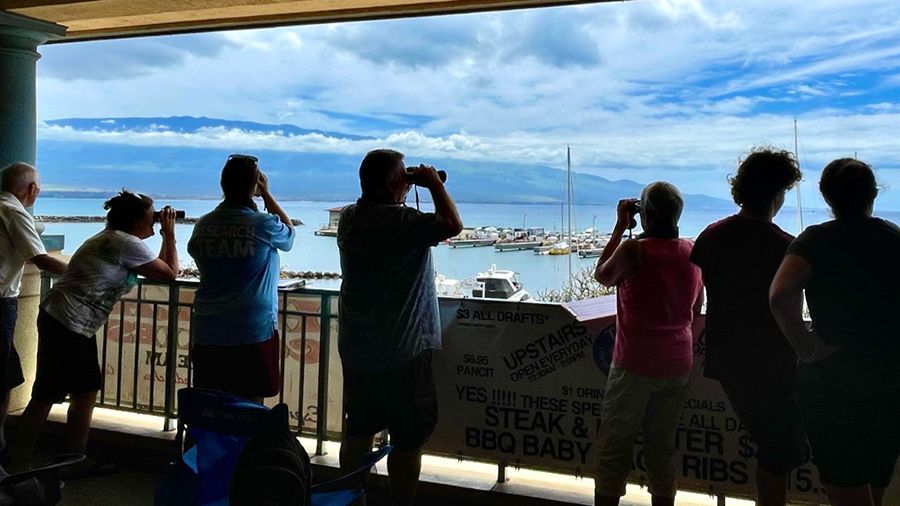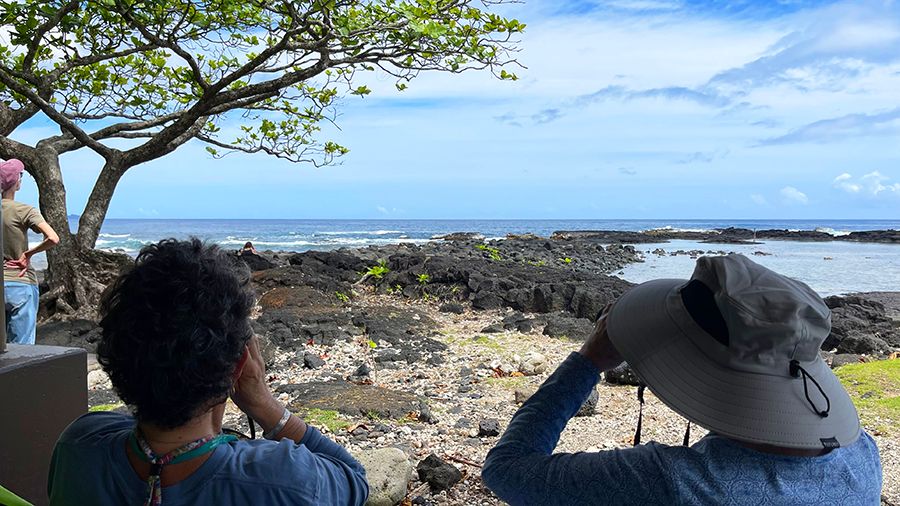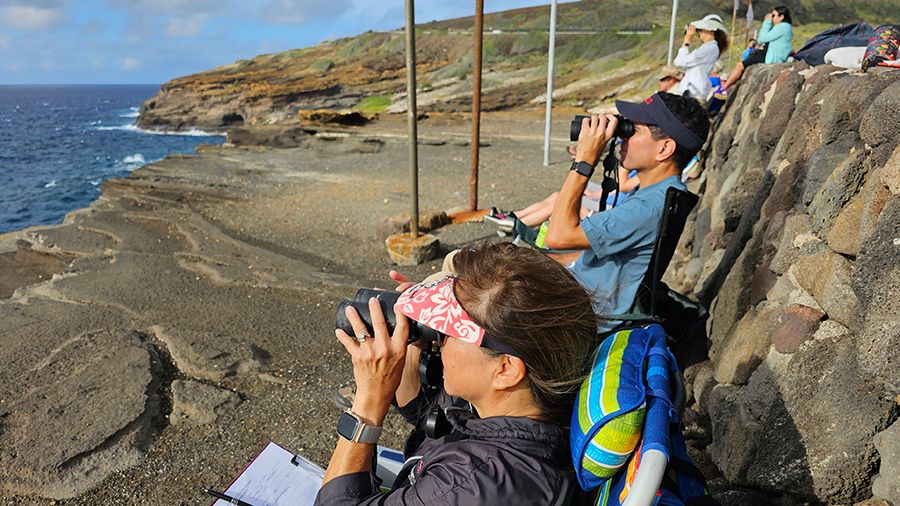Volunteers gathered on the shores of Maui, Oahu, Hawaii Island and Kauai on March 25 for the final humpback whale count of the 2023 season. Unlike blustery weather conditions on the second Feb. 25 count, the weather this time was ideal for whale watching with primarily clear conditions. As a result, volunteers witnessed a lot of whale activity throughout the day.
This is the first year when both whale count programs — Hawaiian Islands Humpback Whale National Marine Sanctuary Ocean Count on the islands of Oahu, Hawaii Island and Kauai, and Pacific Whale Foundation’s Great Whale Count on Maui — resumed normal operations with volunteers on isle beaches. This is also the fifth year that the whale counts were coordinated on the same days in January, February and March, to ensure data was collected simultaneously.
A total of 320 volunteers spread across 42 sites on the main islands. The highest number of humpback whales observed throughout the day numbered 169 whales during the 8:30-8:45 a.m. time period.
On Oahu, Hawaii Island and Kauai, Sanctuary Ocean Count volunteers collected data from 30 shoreline sites with 117 whales observed during the 8:30-8:45 a.m. period, the most of any time period throughout the day.

On Maui, Great Whale Count volunteers collected data from 12 sites with 55 whales observed during the 9-9:15 a.m. period, the most of any time period.
Volunteers observed a grand total of 1,121 humpback whales throughout the state; it’s the highest of the three 2023 counts. Broken down by island, the number of whales observed on Oahu was 467; Hawaii Island, 68; Kauai, 273; and Maui, 313.
The grand total for the Feb. 25 count was 997 whales; the count for Jan. 28 was 587. The lower total for Jan. 28 could be attributed to heavy rain throughout the day on Maui that only allowed for a whale count at one of 12 sites. The weather also hampered visibility or caused counts to end early at several Sanctuary Ocean Count sites.

The whale count is not an exact science since whales are continuously moving, but they provide a glimpse into the general number of whales in Hawaii waters.
Data from the whale count also helps to reveal trends of humpback whale occurrences within and among whale seasons. The grand total could be duplicate sightings of the same whale by different observers during different time periods and different locations.
In addition to whales, volunteers spotted other species, including honu (green sea turtles), naia (spinner dolphins), malolo (Hawaiian flying fish) and various birds such as iwa (great frigatebird), moli (Laysan albatross), kolea (Pacific golden plover), nene (Hawaiian goose), manu of Ku (white tern), uau kani (wedge-tailed shearwater) and more.

The Hawaiian Islands Humpback Whale National Marine Sanctuary Ocean Count promotes public awareness of Hawaii’s annual visitors and is supported by the National Marine Sanctuary Foundation.
Pacific Whale Foundation’s Great Whale Count is a long-term survey of whales in Hawaii, one of the world’s longest-running community science projects.
Sarah Yamanaka covers events, environmental and community news for Spectrum News Hawaii. She can be reached at sarah.yamanaka@charter.com.




